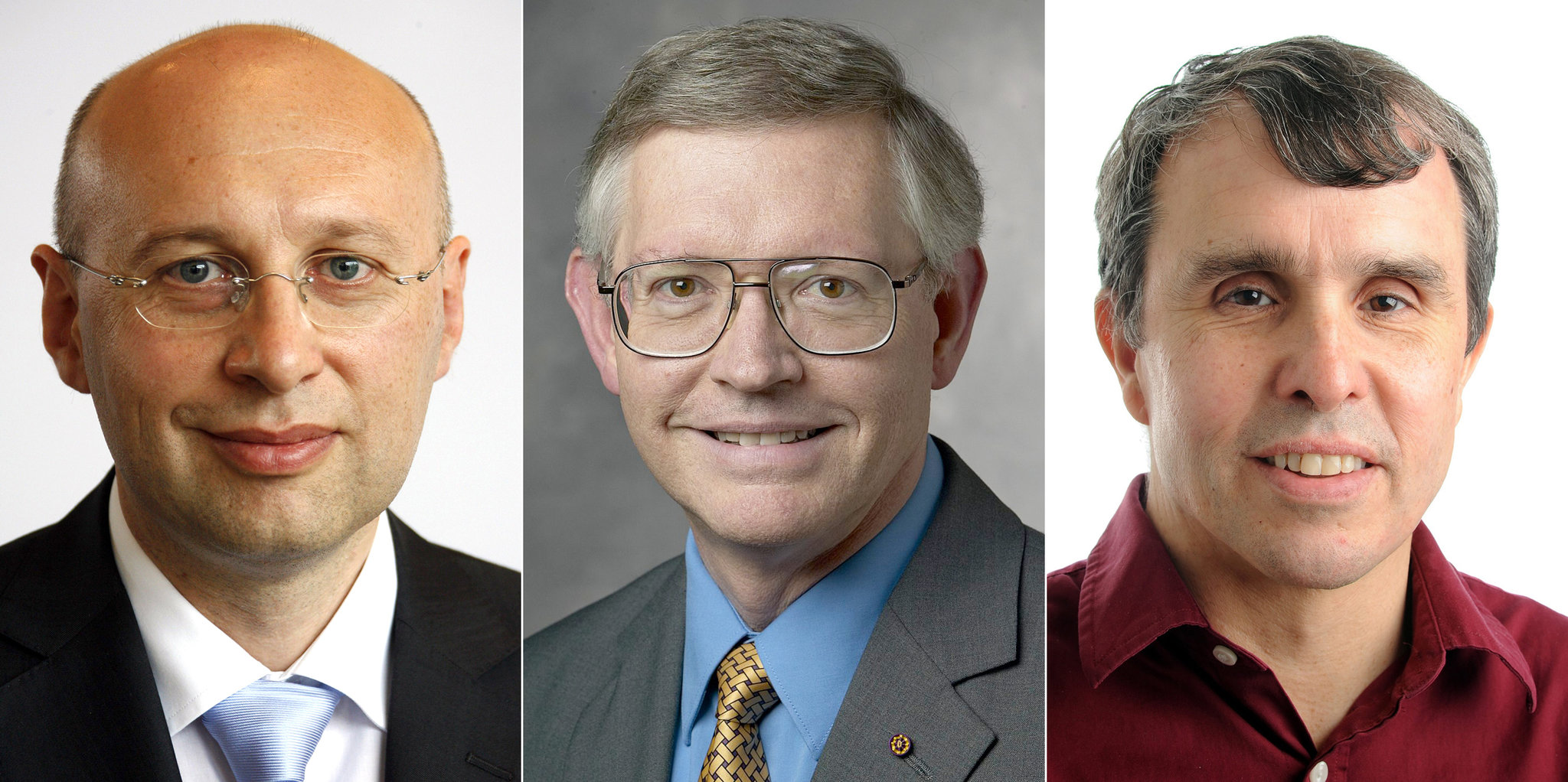2014 Nobel Prize winners announced

Three scientists, two Americans and one German, have received this year’s Nobel Prize in Chemistry for, in effect, circumventing a basic law of physics and enabling optical microscopes to peer at the tiniest structures within living cells.
The 2014 laureates, announced Wednesday morning, are Eric Betzig of the Howard Hughes Medical Institute in Virginia; Stefan W. Hell of the Max Planck Institute for Biophysical Chemistry in Germany; and William E. Moerner of Stanford University in California.
In its citation, the Royal Swedish Academy of Sciences, which awards the prize, said the three were being honored “for the development of super-resolved fluorescence microscopy,” which allows the molecular processes to be viewed in real time.
At a news conference after the announcement in Sweden, Dr. Hell said, “I was totally surprised.”
The committee was not able to reach Dr. Moerner before making the announcement. “I actually still haven’t a chance to talk to them,” Dr. Moerner said Wednesday morning from a hotel room in Brazil, where he is attending a scientific workshop.
He said his wife had called to tell him the news.
For centuries, optical microscopes have allowed biologists to study organisms too small to be seen with the naked eye. But a fundamental law of optics known as the diffraction limit states that the resolution can never be better than half the wavelength of light being looked at.
For optical wavelengths, that limit is about 0.2 millionths of a meter, or one 127-thousandth of an inch. A human hair is about 100 millionths of a meter wide. But a bacterium is about the size of the diffraction limit, and could be seen only as a blob.
The researchers could not break the laws of physics. But, working separately, they realized they could work around the diffraction limit if they could make parts of the molecules glow.
Also John O’Keefe of Britain, May Britt Moser and Edvard I. Moser of Norway were awarded the Nobel Prize in Medicine on Monday for their work identifying the cells that make up the positioning system in the brain.
The prize, the world’s most prestigious scientific award, was announced by Goran K. Hansson, secretary of the Nobel Committee for Physiology or Medicine, at the Karolinska Institute in Stockholm.
On the other hand the Nobel Prize in Physics for 2014 was awarded to Isamu Akasaki and Hiroshi Amano of Japan and Shuji Nakamura of the University of California, Santa Barbara, for “the invention of efficient blue light-emitting diodes which has enabled bright and energy-saving white light sources.”
The prize was announced Tuesday morning in Stockholm by Staffan Normark, permanent secretary of the Royal Swedish Academy of Sciences
Source: New York Times